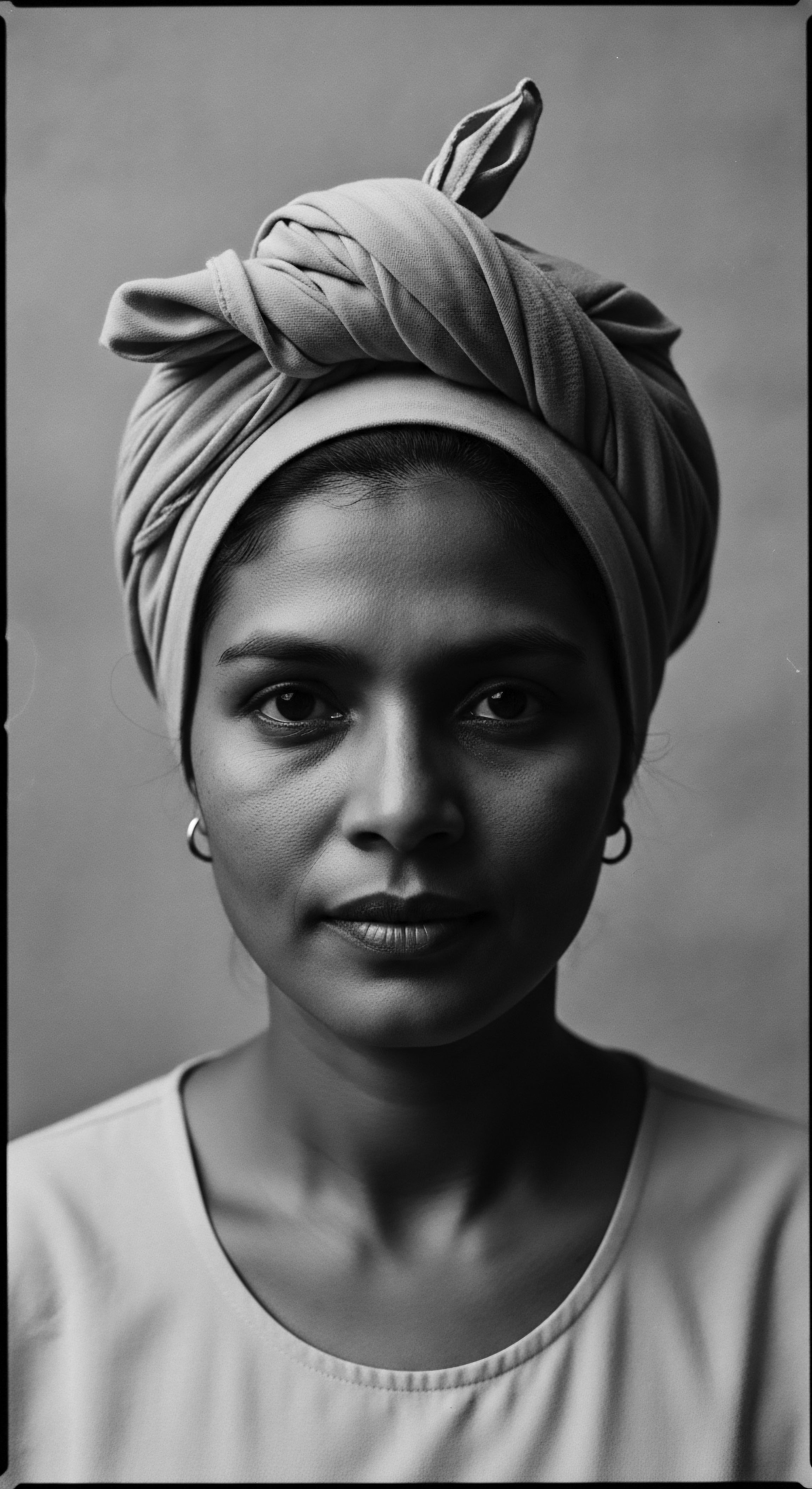
Roots
Consider for a moment the very fibers of our being, the spiraling strands that crown us. These are not merely extensions of our scalp; they are living archives, imbued with the deep memory of landscapes, ancestral ingenuity, and the sun-drenched wisdom of a continent. African plant wisdom, an enduring inheritance, has long sculpted the textured hair care traditions we hold dear today.
It is a legacy whispered through generations, a botanical blueprint laid down in the verdant embrace of ancient lands. The very first touch of a moisturizing balm, the gentle cleansing lather, or the protective twist—each carries the echo of a plant’s bounty, cultivated with reverence and understanding by those who came before us.
To truly appreciate this enduring connection, we must first look to the fundamental architecture of textured hair itself, seeing how ancient practices intuitively addressed its specific needs. The varied contours of a curl, coil, or wave are not just aesthetic; they dictate how moisture travels along the strand, how light reflects, and how resilient the hair truly is. For millennia, African communities observed these natural characteristics, discerning which botanical allies offered sustenance and strength. They understood the hair’s propensity for dryness, its desire for softness, and its need for careful handling long before microscopes revealed the secrets of the cuticle layer.

Hair’s Ancestral Blueprint
The physiology of textured hair, often characterized by its elliptical shape and unique curl patterns, presents distinct attributes. The cuticle layers, while robust, can lift more readily at the curves, potentially leading to moisture loss. This fundamental reality guided ancestral care. Consider the Shea Tree (Vitellaria paradoxa), a botanical gift from West Africa.
Its rich butter, extracted through painstaking traditional methods, provides an unparalleled emollient quality. This deep fatty acid profile intuitively sealed the cuticle, offering a protective barrier against environmental aggressors and preventing moisture egress. It was not just a cosmetic application; it was an act of preservation, a communion with the hair’s inherent needs.
Similarly, Baobab Oil (Adansonia digitata), derived from the iconic “tree of life,” offered more than simple conditioning. Its unique fatty acid composition, including oleic, linoleic, and palmitic acids, provided nourishment without heavy residue, allowing the hair to breathe while still receiving substantial protection. These insights into plant chemistry were not born from laboratories but from generations of close observation, trial, and the cumulative wisdom passed down through communal practice.
African plant wisdom is an enduring inheritance, a botanical blueprint shaping textured hair care traditions.
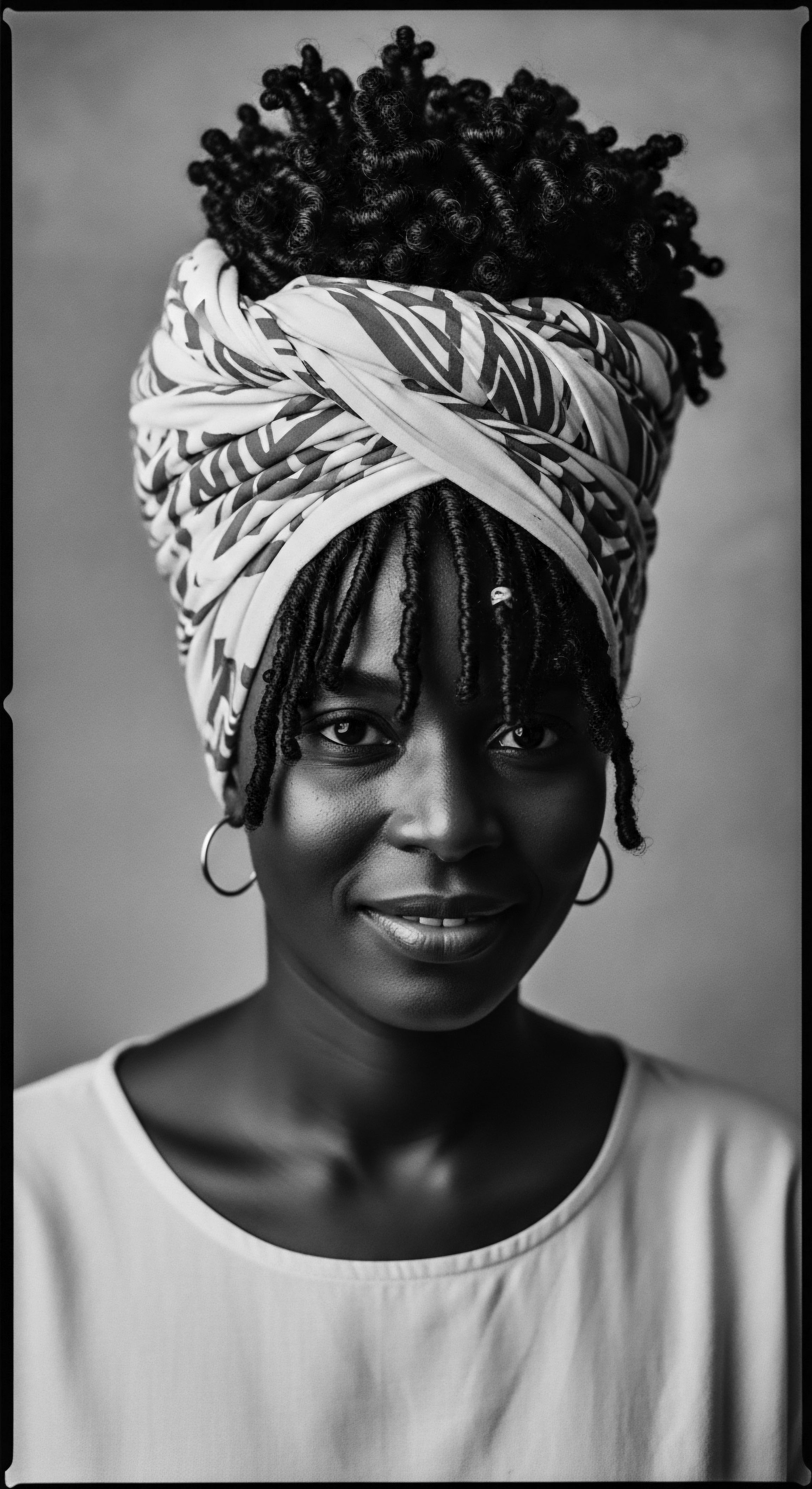
The Language of Strands and Shared Knowledge
The classifications of textured hair, while systematized in modern times, owe much to the nuanced understanding held by African communities for ages. Terms like ‘kinky,’ ‘coily,’ or ‘wavy’ attempt to categorize the spectrum of patterns, yet these are but shadows of the descriptive lexicon once used in various African languages to articulate hair’s texture, its vitality, and its cultural significance. The very act of naming a texture often came with an inherent understanding of its care requirements and styling possibilities, deeply rooted in local botanical availability.
This collective knowledge transcended mere cosmetic concern; it was a societal repository of understanding. Hair was a communicator of social status, marital status, age, and even spiritual belief. The plant materials used in its adornment and care thus carried symbolic weight, their application a ritualistic affirmation of identity and community ties.
How did African plant wisdom address diverse hair types across the continent? The answer lies in regional specificity and the incredible biodiversity of Africa.
- Shea Butter (Vitellaria paradoxa) ❉ Prevalent in West Africa, it is revered for its deeply moisturizing and protective properties, ideal for drier, coily textures.
- Baobab Oil (Adansonia digitata) ❉ Found across sub-Saharan Africa, its lighter yet nourishing profile benefits a wider range of textures, including wavy and loosely curled patterns.
- Chebe Powder (Croton Zambesicus) ❉ Originating from Chad, this powder, mixed with oils, traditionally prevents breakage, favoring very coily and fragile hair by strengthening the shaft.
The ingenuity lay in matching the plant’s properties to the hair’s specific needs, not through a universal product, but through localized, Heritage-Informed discernment.

Cycles of Growth, Nourished by Nature
Understanding hair growth cycles, the phases of anagen, catagen, and telogen, allows modern science to optimize hair care routines. Historically, African communities understood these cycles through observation. They recognized periods of growth, rest, and shedding. Their plant-based remedies aimed to support healthy growth and minimize excessive loss.
Ingredients rich in vitamins, minerals, and antioxidants, often derived from leaves, roots, or seeds, provided the scalp with the necessary nutrients for robust hair follicles. For instance, the leaves of the Moringa Tree (Moringa oleifera), widely present across Africa, are replete with vitamins A, B, C, and E, and various minerals. While perhaps not directly applied as a hair treatment in all regions, its consumption as a nutrient-dense food undoubtedly contributed to overall health, which in turn supported healthy hair growth. This holistic connection, where bodily wellness mirrored external radiance, is a cornerstone of African ancestral wisdom.
Hair became a communicator of status, age, and spiritual belief, with plant applications carrying symbolic weight.
A powerful illustration of this deep, inherited wisdom can be observed in the traditional hair care practices of the Himba Women of Namibia. For centuries, they have crafted a distinctive aesthetic using Otjize, a paste made from Red Ocher (often mixed with aromatic plants like Omuzumba), butter fat, and resin. This unique mixture, applied daily, serves multiple purposes ❉ it cleanses, moisturizes, protects from sun and insect bites, and contributes to the iconic reddish hue of their skin and hair. This is not merely an aesthetic choice; it is a profound cultural marker, a statement of identity passed down through generations.
The deliberate combination of earth minerals with plant-derived fats speaks to an intuitive understanding of both protection and adornment, demonstrating a living legacy of sophisticated botanical and mineral knowledge that has endured for centuries, resisting external influences and maintaining its powerful connection to their ancestral identity. (Crittenden, 2011, p. 55)
| Plant or Ingredient Shea Butter (Vitellaria paradoxa) |
| Traditional Application (Heritage Context) Moisturizer, sealant, protective barrier against sun and wind. Used for daily care and styling. |
| Modern Scientific Relevance for Hair Rich in fatty acids (oleic, stearic, linoleic), vitamins A, E, F. Emollient, anti-inflammatory, UV protection properties. Enhances moisture retention, reduces breakage. |
| Plant or Ingredient Baobab Oil (Adansonia digitata) |
| Traditional Application (Heritage Context) Lightweight conditioning, scalp health, skin healing. Used for hair sheen and flexibility. |
| Modern Scientific Relevance for Hair Contains omega-3, -6, -9 fatty acids, vitamins A, C, D, E. Antioxidant, anti-inflammatory. Nourishes hair shaft, improves elasticity without weighing down. |
| Plant or Ingredient Aloe Vera (Aloe barbadensis miller) |
| Traditional Application (Heritage Context) Scalp soothing, cleansing, growth promotion. Applied as a gel directly to scalp and hair. |
| Modern Scientific Relevance for Hair Enzymes break down dead skin cells on scalp. Contains vitamins, amino acids, polysaccharides. Hydrating, anti-inflammatory, promotes healthy scalp environment. |
| Plant or Ingredient These ancient remedies continue to provide relevant solutions for contemporary textured hair challenges, bridging centuries of wisdom. |
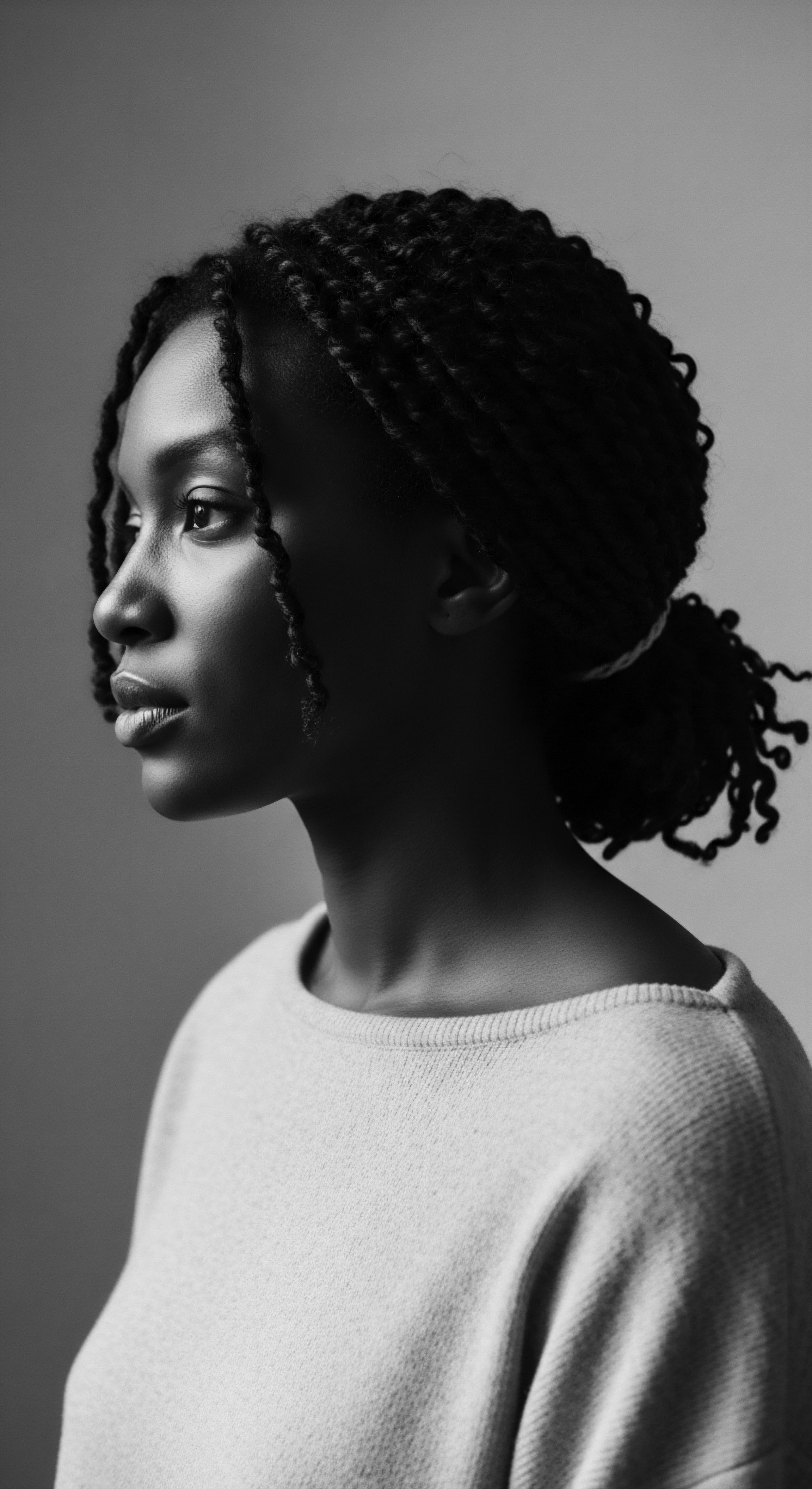
Ritual
The journey of textured hair care, from ancient practices to modern expressions, is not merely a technical evolution; it is a profound Ritual, a continuous connection to ancestral knowledge. Styling textured hair, in its myriad forms, has always been more than an aesthetic choice. It has been a language of community, a declaration of identity, and a celebration of unique beauty, deeply informed by the gifts of the plant kingdom. The hands that braided, twisted, or adorned hair in centuries past were guided by an intimate understanding of both the hair itself and the botanical aids that enhanced its vitality and form.
Consider the intricate Braiding Traditions of the Fulani, Yoruba, or Maasai peoples. These were not quickly executed styles; they were elaborate works of art, often requiring hours of communal effort. The application of oils and butters, derived from plants like Coconut, Palm Kernel, or the ubiquitous Shea, was integral to these processes.
These natural emollients allowed the hair to be manipulated without excessive tension, providing slip, preventing breakage, and leaving the hair pliable. The foresight to incorporate these conditioning agents speaks to a deep, practical wisdom—a practical wisdom that modern hair science has only recently begun to fully quantify and appreciate.

Protective Styles and Their Ancestral Roots
Protective styles, such as braids, twists, and locs, are not contemporary inventions. They are a direct inheritance from African ancestral practices, designed to safeguard the hair from environmental damage, mechanical stress, and to facilitate growth. The very concept of ‘protective styling’ as a cornerstone of hair health originates from communities who understood the delicate nature of textured strands. Plant-based ingredients played a vital role in these traditions.
For instance, certain plant resins or clays were sometimes used in conjunction with protective styles to help set the hair, offering a gentle hold while conditioning. The enduring popularity of styles like Cornrows and Braids with Extensions reflects this powerful ancestral ingenuity, a testament to the effectiveness and beauty of these deeply rooted methods.
How did traditional African styling techniques utilize plants for hold and longevity?
Beyond simple moisturization, certain plants were employed for their structural properties. The mucilaginous compounds in plants like Aloe Vera or Flaxseed (while not exclusively African, their principles of use align) could provide a light hold, helping to define curls or keep braids neat. The art was in extracting these properties without causing stiffness or damage, a delicate balance mastered through generations of observation and experimentation. The natural oils provided lubrication, allowing tools—often simple combs crafted from wood or bone—to glide through the hair, minimizing friction.
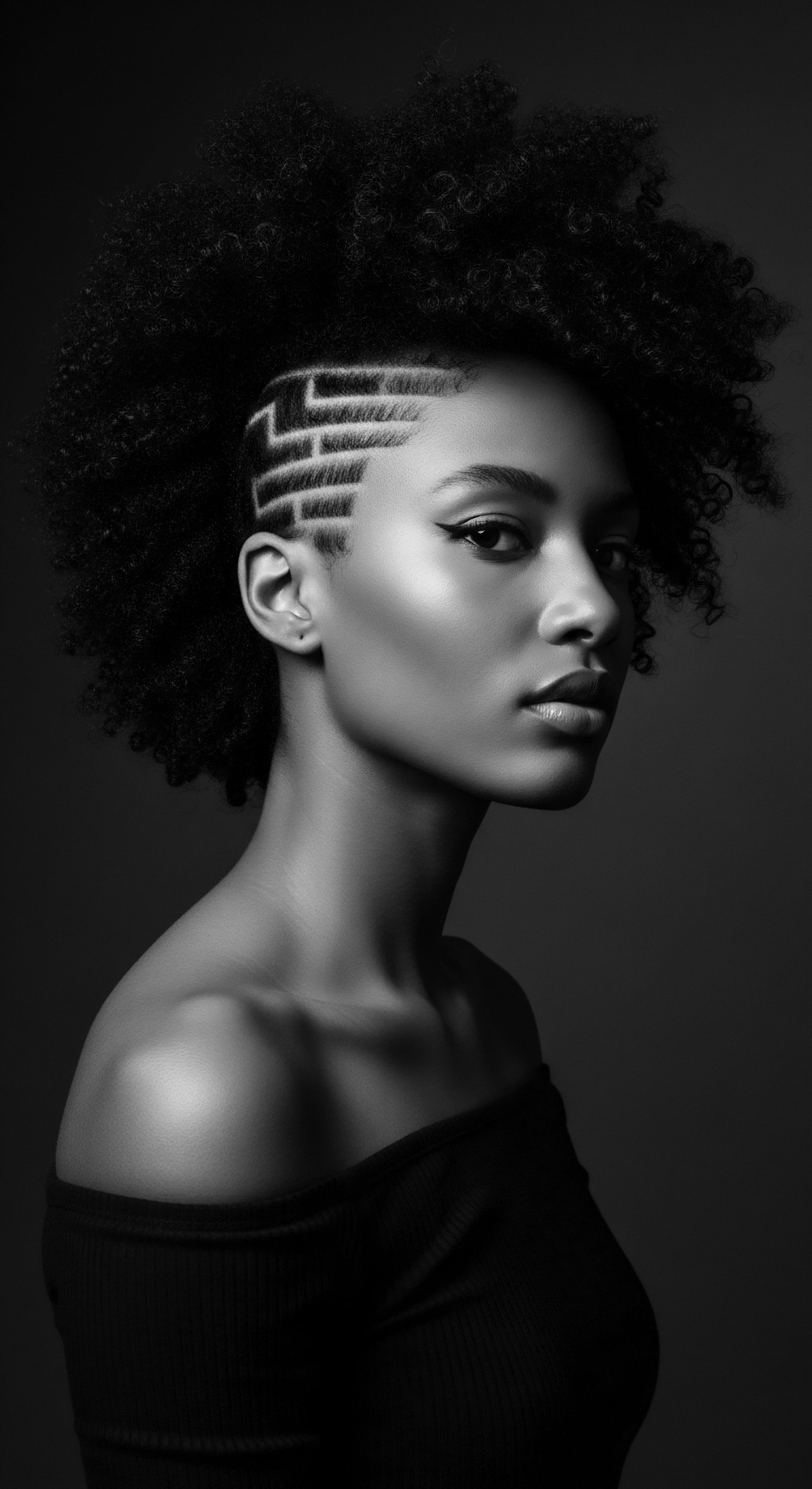
Natural Styling and Definition Techniques
The celebration of natural texture, a modern movement, finds its deepest resonance in ancestral practices that revered hair in its untouched state. Techniques for defining curls, coils, and waves without heat or harsh chemicals were perfected over centuries. The use of water, often infused with herbal extracts, was fundamental.
Spritzing hair with Rosewater (derived from roses, a plant with a long history of cultivation in North Africa) or a decoction of Hibiscus Flowers not only hydrated the hair but also imparted subtle conditioning properties and a pleasant scent. These simple, yet profoundly effective, approaches allowed textured hair to dry in its natural pattern, retaining its inherent shape and beauty.
Styling textured hair, in its myriad forms, has always been a profound ritual, a continuous connection to ancestral knowledge.
The focus was on working with the hair’s natural inclinations, rather than forcing it into unnatural forms. This philosophy, deeply ingrained in African hair Heritage, contrasts sharply with later imposed beauty standards that often denigrated natural texture. Reclaiming these techniques today is an act of defiance, a re-connection to a powerful and affirming past.
- Washing and Conditioning ❉ Historically, plants like Black Soap (Alata Samina from West Africa, derived from plantain skins, cocoa pods, and shea bark) provided gentle cleansing and conditioning, far removed from harsh chemical detergents.
- Defining Curls ❉ Hydration with water and light oils, allowing natural curl patterns to form, a technique refined over millennia.
- Styling with Adornment ❉ Integrating plant materials, seeds, cowrie shells, and beads into hair as expressions of status, ritual, and celebration.

Tools of Adornment and Ancient Craft
The tools used in traditional African hair styling were extensions of the hand and the mind, often crafted from natural materials. Combs carved from Wood or Bone, needles fashioned from plant fibers, and even simple fingers became instruments of artistic expression. The process of detangling, for instance, was often a patient, meticulous endeavor, aided by the application of plant-derived emollients to soften the hair and reduce friction.
These tools, simple as they may seem, were designed with an intimate understanding of textured hair’s propensity for tangling and its need for gentle care. They represent a continuum of craft and purpose, a direct link to the hands that groomed hair centuries ago.
The ingenuity extends to more complex hair adornments. The use of natural fibers, such as Raffia or various Grasses, woven into extensions or used to create elaborate hair pieces, speaks to a sophisticated understanding of material science and aesthetics. These were not synthetic additions; they were organic extensions of the hair, complementing its texture and blending seamlessly with it. The very act of gathering, preparing, and incorporating these plant-based materials was itself a part of the hair care Heritage, an act of resourcefulness and creativity.
| Tool Category Combs |
| Traditional Examples (Heritage Origin) Hand-carved wooden or bone combs (e.g. from West Africa, designed for detangling coils). |
| Modern Counterparts / Evolution Wide-tooth combs, detangling brushes with flexible bristles, often plastic or silicone. |
| Tool Category Styling Agents |
| Traditional Examples (Heritage Origin) Plant-based gels (e.g. aloe vera mucilage), natural resins, clays. |
| Modern Counterparts / Evolution Modern curl creams, styling gels, mousses with synthetic or natural polymers for hold. |
| Tool Category Protective Wraps |
| Traditional Examples (Heritage Origin) Hand-woven scarves, wraps from cotton or plant fibers (e.g. Kente cloth, adire). |
| Modern Counterparts / Evolution Silk or satin scarves, bonnets, pillowcases, designed to minimize friction. |
| Tool Category The essence of these tools, from ancient to contemporary, remains focused on preserving and enhancing textured hair. |
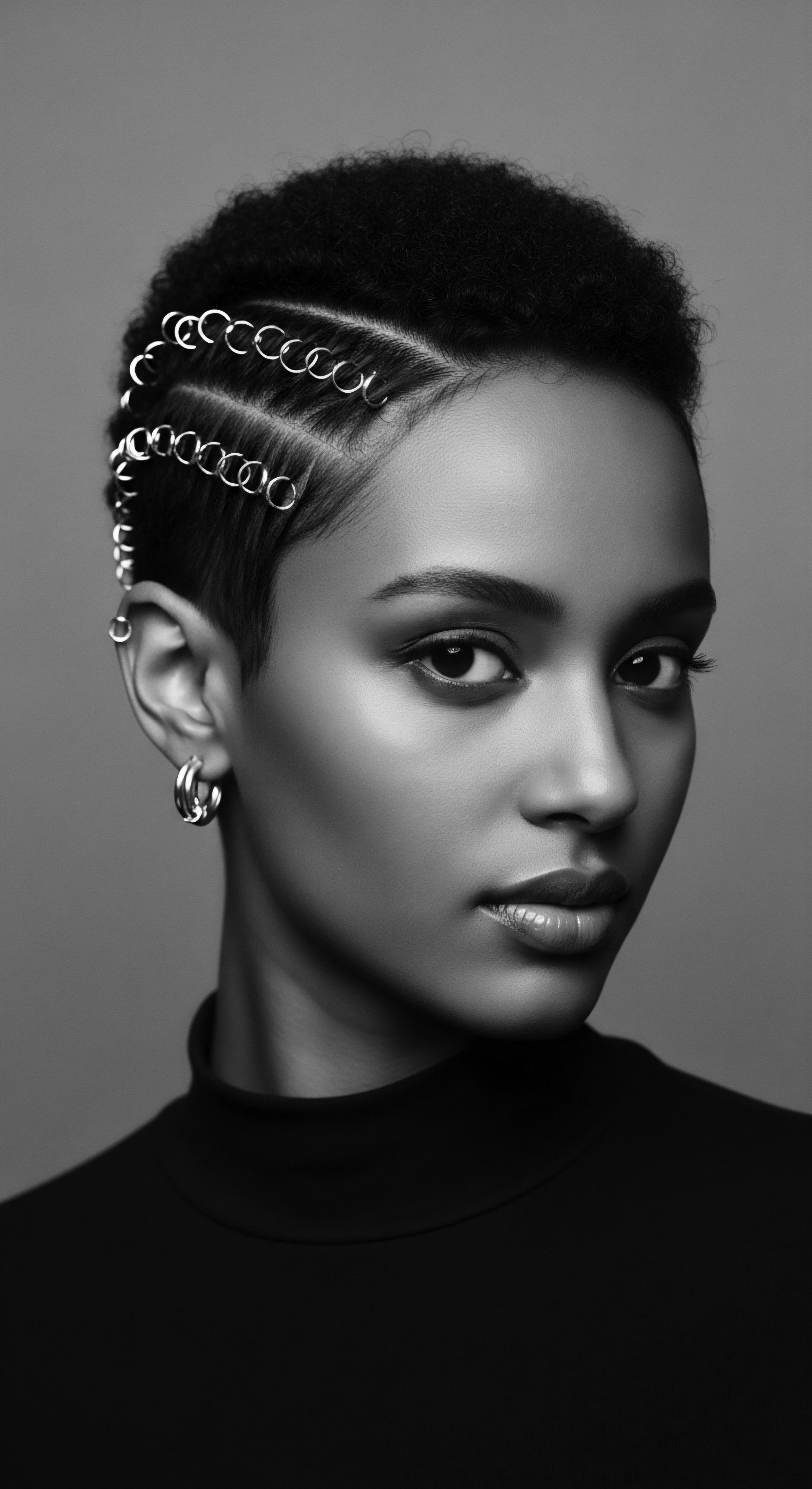
Relay
The enduring legacy of African plant wisdom, a profound Relay of knowledge across generations, continues to shape textured hair care in ways both overt and subtle. This is where the wisdom of the ancients meets contemporary understanding, where the rhythmic pulse of tradition harmonizes with the precise language of science. This continuous exchange allows for a deeper appreciation of the complex interplay between botanical efficacy, cultural expression, and personal wellness—a journey that is far from complete, continually revealing new dimensions of Heritage.
Moving beyond the superficial, we observe how ancestral practices laid the groundwork for today’s holistic regimens. The traditional emphasis on scalp health, for instance, was not based on guesswork. Communities knew that a healthy scalp was the bedrock of strong, flourishing hair.
They utilized various leaves, roots, and barks to create decoctions and poultices, not only for cleansing but also for their purported medicinal properties. This deep respect for the scalp as the source, not merely the recipient, of hair health, stands as a cornerstone of Ancestral Wisdom that modern dermatology now validates.

Personalizing Care with Ancient Insight
The concept of a personalized hair care regimen, so widely discussed today, mirrors the nuanced approach of African ancestral practices. There was no single, universal remedy. Instead, care was often tailored to individual needs, seasonal changes, and specific hair conditions, drawing from a localized palette of plants. A skilled elder or a community healer would discern the needs of a particular head of hair and recommend specific herbs, oils, or methods.
This bespoke approach, rooted in observation and experiential knowledge, stands in stark contrast to the mass-produced, one-size-fits-all products that emerged with industrialization. Reclaiming this personalized aspect of care is a return to a more authentic, deeply connected relationship with one’s hair.
What traditional methods informed modern personalized hair care?
Consider the use of fermented rice water, a practice often associated with Asian traditions, but with parallels in some African communities who fermented other grains or plant materials for their hair-strengthening properties. The proteins and amino acids released during fermentation could coat and fortify the hair shaft. Similarly, the meticulous practice of hair oiling, using various plant-based oils, was a personalized ritual. The choice of oil—whether Argan from North Africa, Castor from East Africa, or Shea from West Africa—depended on the hair’s density, porosity, and the desired outcome, a testament to an intricate system of personalized botanical application.

The Nightly Embrace and Bonnet Wisdom
The wisdom of protecting textured hair during sleep is another profound aspect of African hair Heritage that has been relayed through generations. The nighttime sanctuary, with its essential sleep protection, is not a novel concept. For centuries, African women, recognizing the delicate nature of their strands and the friction caused by rough sleeping surfaces, covered their hair with soft fabrics. These wraps, often made from Cotton or later, Silk, served to prevent tangling, retain moisture, and preserve intricate daytime styles.
African plant wisdom is a profound relay of knowledge across generations, shaping textured hair care overtly and subtly.
The modern Satin Bonnet or silk pillowcase is a direct descendant of this ancestral practice. It is a symbol of continuity, an everyday item that whispers of resilience and adaptive care passed down through time, particularly within the African diaspora. This simple act of protection, often underestimated, is a powerful legacy of Heritage and practicality.
The plant-based oils applied before wrapping the hair at night—be it Coconut Oil for its penetrative qualities or Jojoba Oil (mimicking natural sebum) for its balancing effects—were chosen with deliberate intent. They worked in tandem with the protective coverings, maximizing hydration and minimizing friction, ensuring the hair awoke nourished and refreshed. This foresight, a seamless blend of botanical knowledge and practical textiles, speaks volumes about the depth of ancestral hair care.

Addressing Hair Challenges with Botanical Solutions
Hair challenges, from breakage to dryness, are universal, yet the approaches to addressing them within African communities were often rooted in the land’s bounty. The treatment of dry, brittle hair, for instance, involved copious use of emollient plant butters and oils, layered for maximum effect. The use of Fenugreek (Trigonella foenum-graecum), widely used in North Africa and beyond, illustrates this.
Its seeds, when soaked, produce a mucilaginous substance that acts as a natural conditioner, known to strengthen hair and promote growth. This was a direct answer to common hair fragility.
Consider also the traditional use of Clay Masks, such as Rhassoul Clay from Morocco. This mineral-rich clay, when mixed with water or herbal infusions, served as a gentle cleanser and detoxifier for the scalp, removing impurities without stripping natural oils. It also imparted a remarkable softness to the hair, enhancing its natural elasticity.
These were not merely quick fixes; they were comprehensive remedies, drawing on the earth’s natural properties to restore balance and health. The scientific understanding of today often corroborates the empirical effectiveness of these time-honored remedies, highlighting the enduring relevance of this Heritage.
What role do ancestral wellness philosophies play in modern hair health?
The connection between internal wellness and external appearance, including hair health, was a core tenet of African ancestral medicine. The belief that true beauty radiates from within, stemming from a balanced mind, body, and spirit, influenced hair care practices. The consumption of nutrient-dense foods, the use of herbal teas, and participation in community rituals were all considered integral to overall well-being.
This holistic approach, where hair care is seen as an extension of self-care and spiritual alignment, remains a powerful guiding principle today. It reminds us that external application of plant wisdom is most potent when supported by internal vitality, a wisdom passed down through continuous Relay.
- Baobab Fruit Pulp ❉ Rich in Vitamin C and antioxidants, consumed for general health, supporting hair from within.
- African Black Soap ❉ A traditional cleanser, often made from plantain skins and shea butter, providing gentle but effective cleansing without stripping hair.
- Castor Oil ❉ Known for its thick consistency, traditionally used to moisturize the scalp and promote hair growth, particularly popular in Jamaican Black Castor Oil variants.

Reflection
The story of African plant wisdom and its enduring legacy on textured hair care heritage is a living narrative, continually unfolding. It is a profound meditation on the very soul of a strand, revealing how each curl and coil carries within it the echoes of ancient forests, the resilience of communal bonds, and the quiet power of self-acceptance. We stand at a unique juncture, inheriting a tradition of botanical ingenuity that spans millennia, a tradition that offered solutions long before laboratories defined molecular structures.
This Heritage is not a static relic of the past; it is a dynamic wellspring, nourishing contemporary understanding. The knowledge embedded within ancestral practices, the intuitive grasp of plants’ properties, and the communal rituals of care provide a powerful counter-narrative to imposed beauty standards. They remind us that the most effective, most respectful approach to textured hair care begins with deep reverence for its unique nature and its profound historical journey.
To engage with this wisdom is to acknowledge a lineage of survival, creativity, and unapologetic self-expression. It is to walk a path illuminated by the light of generations, each step affirming the radiant legacy of African plant wisdom, forever intertwined with the glorious tapestry of textured hair.

References
- Crittenden, R. (2011). Hair and identity in the Himba culture of Namibia. In L. L. Johnson (Ed.), Hair ❉ A Cultural History of Human Hairdressing (pp. 53-62). Berg Publishers.
- Schliessler, M. Gaisberger, H. Kouablan, K. & Boffa, J. M. (2007). The contribution of Vitellaria paradoxa C. F. Gaertn. (shea tree) to rural livelihoods in southern Mali. Forest Trees and Livelihoods, 17(3), 209-223.
- Karanja, M. (2009). The socio-cultural and economic significance of hair in Africa. Journal of Black Studies, 40(2), 229-242.
- Agyeman, O. (2006). African Cultural Heritage and the Chemical Sciences. Springer.
- Ogbu, J. U. (1987). African Cultural Dynamics. Howard University Press.
- Giddings, S. (2010). African American Hairstyles ❉ A Historical and Cultural Exploration. Greenhaven Press.
- Bennett, H. (1999). African-American Hairstyles ❉ History and Trends. Milady Publishing Company.
- Lewis, L. A. (2006). Hair Story ❉ Untangling the Roots of Black Hair in America. St. Martin’s Press.
